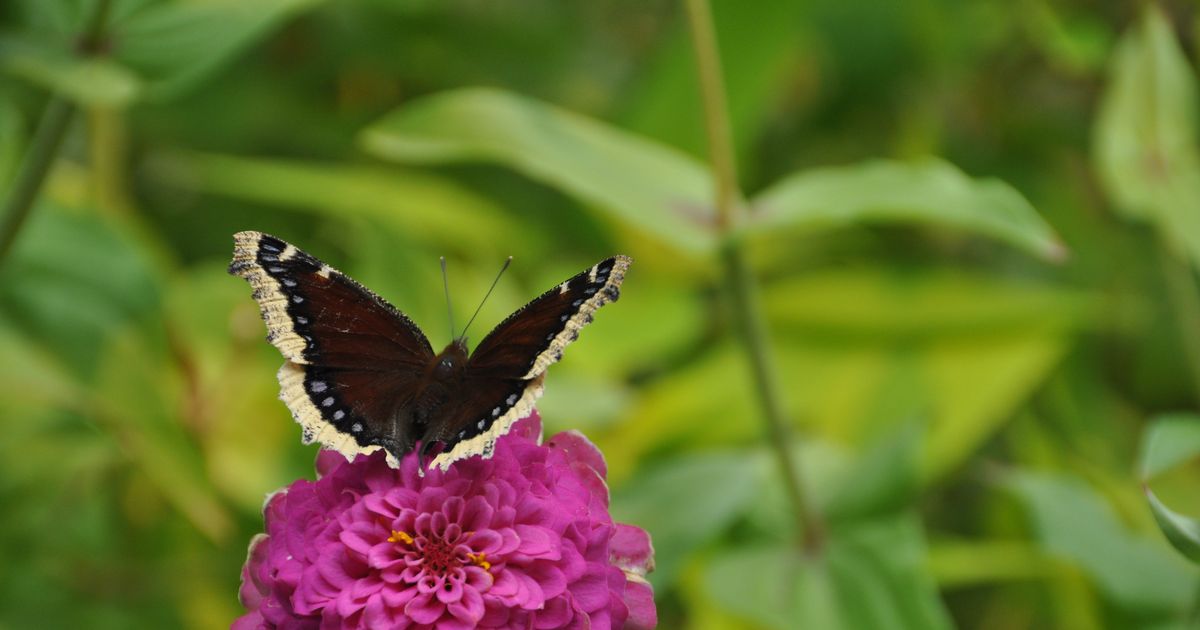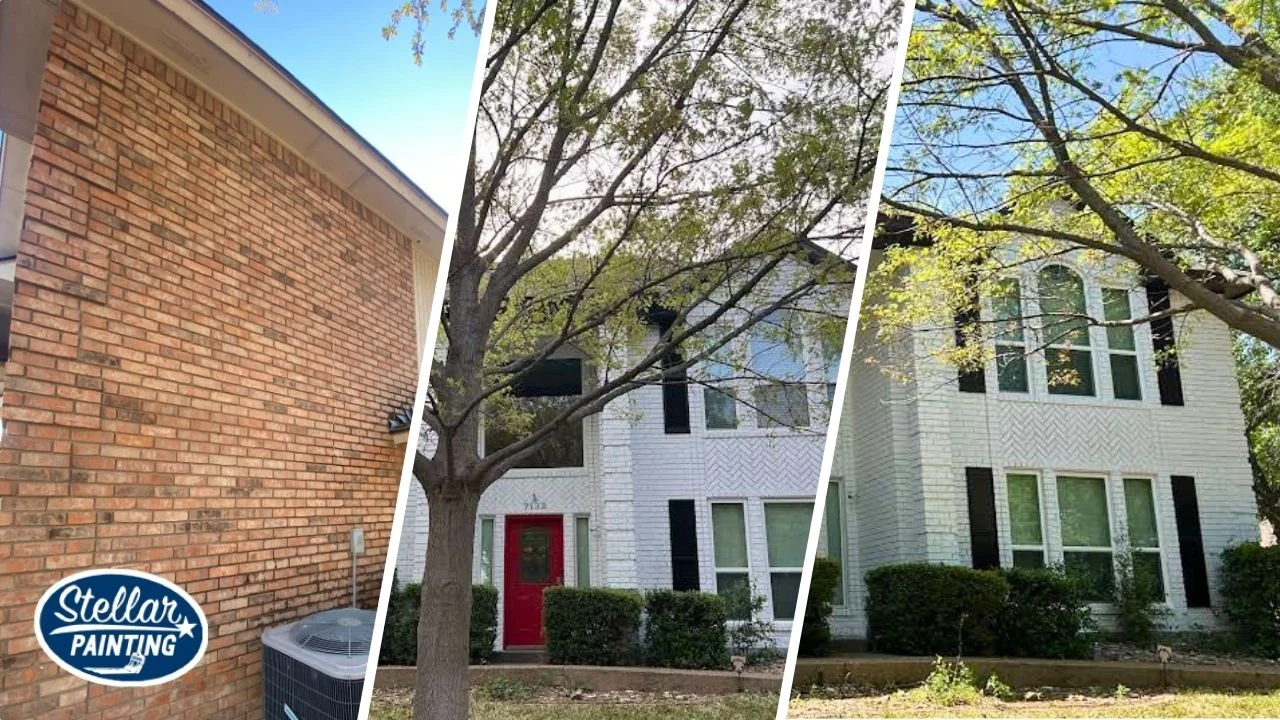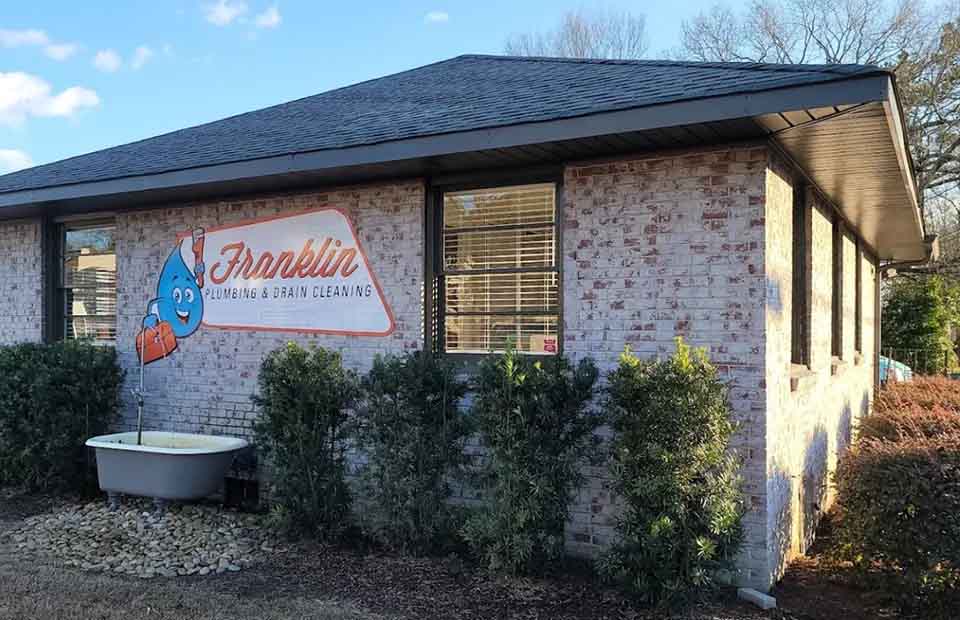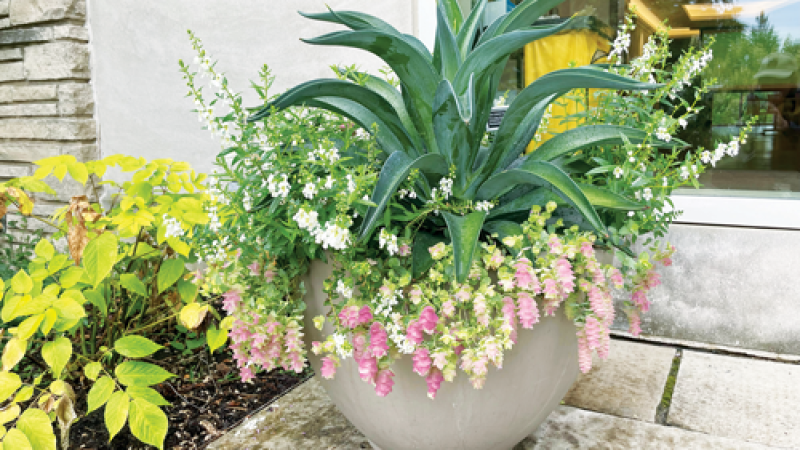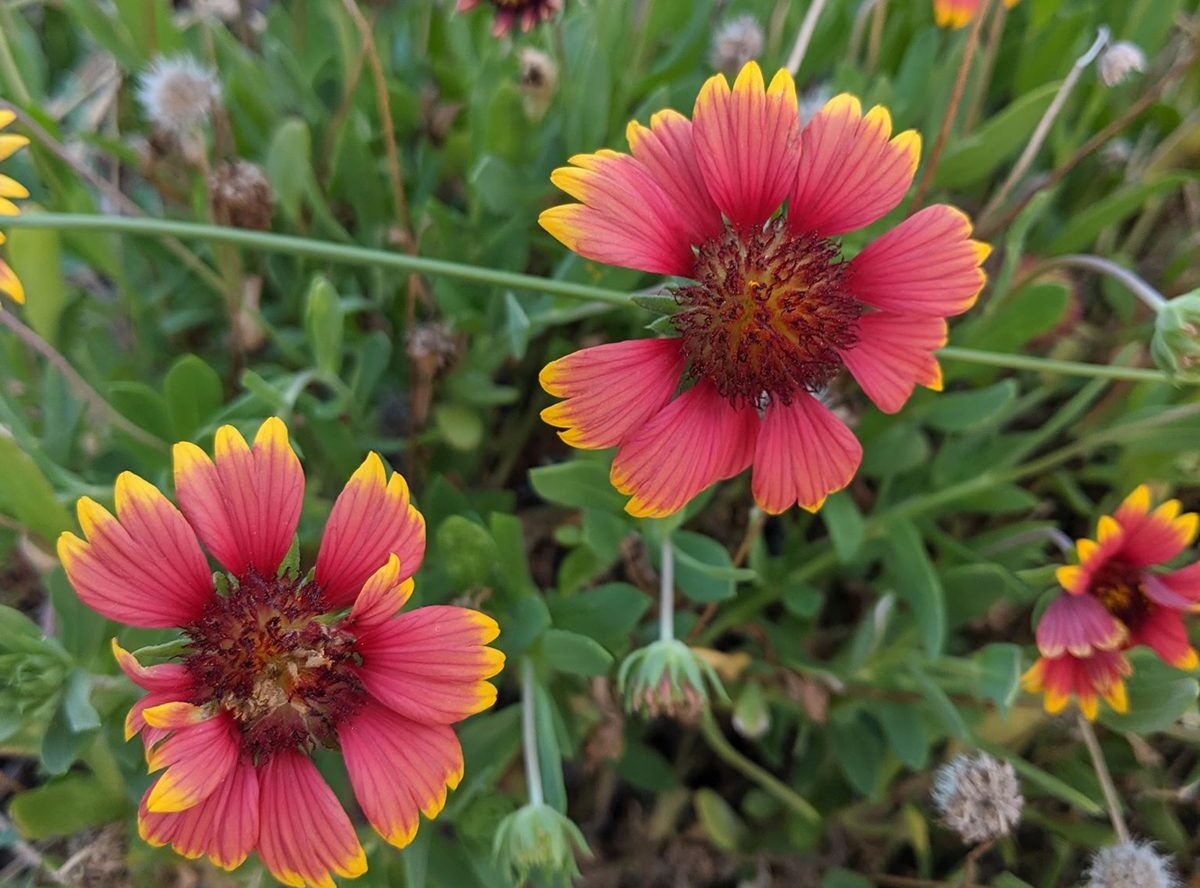This mangave in the center paired with angelonia — the white flowers — and an ornamental oregano are an example of a thriller, filler and spiller that can coexist in a pot together.
Lettuce can be grown around this time of year for eager gardeners who have a case of spring fever. Pictured is lettuce grown in an aluminum lasagna pan.
Photo provided by Lindsey Kerr
METRO DETROIT — Not all gardens need to be grown in the ground.
According to Lindsey Kerr, the Wayne County consumer horticulture educator for Michigan State University Extension, container gardening is a great option for those who want to enjoy gardening without the need to dig holes in their backyards or for aspiring gardeners who do not have backyards at all.
“Container gardening is great for people who live in smaller spaces, maybe in a condo or an apartment,” Kerr said. “But even homeowners that have maybe a deck or a patio, container gardening can be great because you might not have to bend over as much.”
Kerr advised beginner container gardeners to keep an eye out for keywords like “patio,” “baby,” “bush” or “dwarf” when purchasing fruits and vegetables.
“If you want to grow squash in a pot, then you would want a dwarf or a bush-type squash plant. It’s not going to vine. Squash, like zucchini, can get huge. They bred ones that the plant is smaller, but the produce is the same size,” Kerr said.
She added that, ultimately, one would want a bigger pot, around 18 inches across, for things like tomatoes, because they can grow tall. Wind could cause them to topple over in a smaller pot, and the plant might dry out faster in a smaller pot.
Kerr added that gardeners should also be careful not to put young, small plants in a pot that is too big to avoid rotting. Instead, she encourages container gardeners to start small with a 4- or 6-inch pot and gradually work up to the 18-inch pot as the plant grows.
“I tell people to only plant one tomato plant or one pepper plant or one eggplant in a pot. I don’t think it’s a good idea to put other things in a pot with them. It’s just too much competition,” Kerr said.
MSU Extension Greenhouse and Floriculture Extension Educator Caitlin Splawski, who is based in Oakland County, shared how to ensure success for co-inhabiting plants in a container.
“The rule of thumb is to have a thriller, a filler and a spiller in a container so that you kind of mix and match those different height levels within the container,” Splawski said.
Splawski said a thriller is the center or the tallest plant. The fillers spread out under the thriller to cover the soil, and the spillers trail over the sides of the container.
She shared that a combination of plants in a sunny spot could have a mangave as the thriller, since they have fibrous tissue with a high water-holding capacity, paired with angelonia as the filler and an ornamental oregano as the spiller.
“Those two plants (angelonia and ornamental oregano) are going to use up a little more moisture, which is fine when you’re combining it with one that doesn’t use quite as much moisture, but they can all tolerate full sunshine, and that will make them flower more,” Splawski said.
She added that most plants need attention on a weekly basis, so tools like self-waterers can help to keep the moisture level consistent, and some pots have water reservoirs to allow the plant to access additional water if needed.
“You can use little tricks like that to kind of help keep those pots maintained, and just knowing your preferences as a gardener is important,” Splawski said.
She explained that gardeners who don’t want to have to worry about checking on their plants so much might prefer plants that require part shade since they can do well with only six hours or less of sun.
She shared an example of some partially shaded plants that could coexist in a container and combine different textures, including alocasia as the thriller, Persian shield as the spiller and euphorbia as a filler.
Splawski encouraged gardeners to combine herbs with flowers, if they’d like, but advised gardeners to be careful when using pesticides on ornamental plants that are combined with edible plants.
“You can combine all sorts of flowers with herbs. You just want to make sure that you know you’re treating them in a way that is going to be safe for you to eat. So, steer clear from putting any pesticides on those containers. If you are someone that uses those chemicals, you’re going to want to keep in mind that you’ve got edible things in the pot,” she said.
Splawski added that gardeners pulling out their containers for the new growth season might be pleasantly surprised to find some perennial herbs that survived the Michigan winter.
“When you are rehabbing your containers for the season, you might have some perennial herbs that can last in those containers for you over the winter. And all you have to do is build in some annuals around them, and it gives you a nice start,” Splawski said.
Both Kerr and Splawski warned Michigan gardeners who have a case of spring fever to hold off on planting just yet, with some exceptions for hearty plants such as kale, lettuce, snap peas and pansies. Otherwise, Kerr said to keep a watchful eye on the weather, and it is usually safe to plant around Memorial Day.
“We can plant those kinds of things in pots and have them outside, and they’ll be OK. If it’s going to get below freezing, then I would just cover those pots. You can cover them with blankets or old towels or bedsheets, and that helps hold in the heat overnight, and then you take those covers off in the morning. But I would wait till late May to plant anything like tomatoes and eggplant and peppers and cucumbers, melons, squash, beans — those things like to be hot,” Kerr said.
Gardeners are encouraged to reach out to the MSU Extension with any questions at www.canr.msu.edu/home_gardening. The MSU Extension gardening hotline, (888) 678-3464, operates from 9 a.m. to noon on Mondays, Wednesdays and Fridays.
“It’s a free resource that Michigan State University Extension provides to everybody in Michigan. So we just want people to know that so we can fulfill our mission of serving the people of Michigan,” Kerr said.
You May Also Be Interested In

